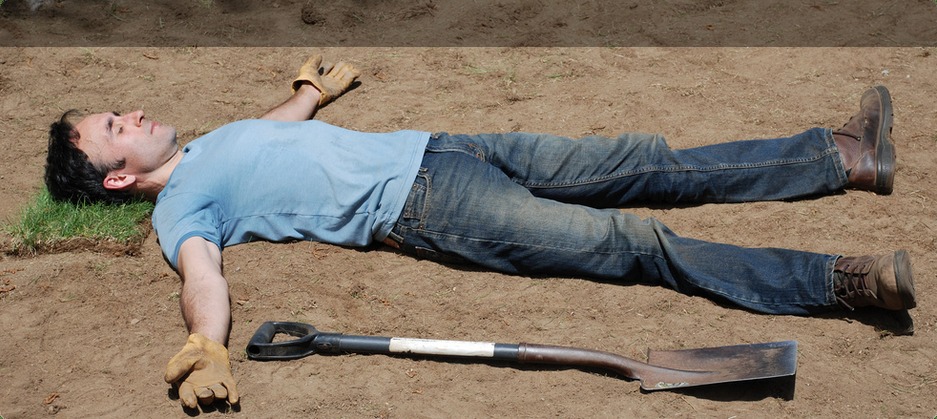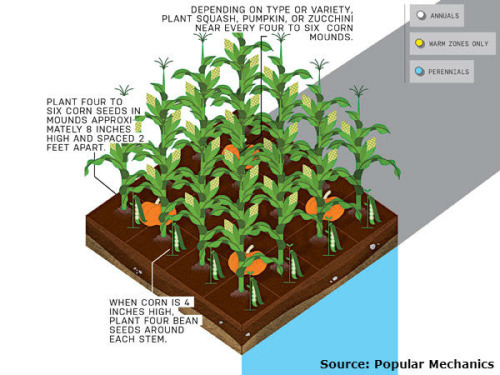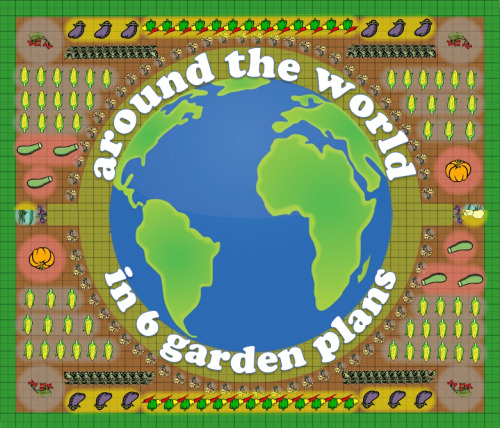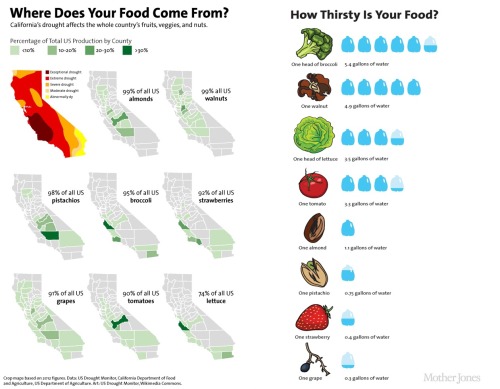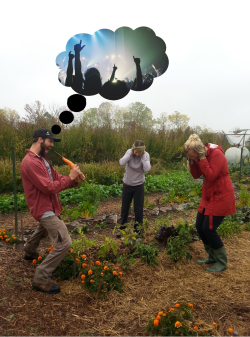I went outside this morning to put a couple letters in our mailbox and had one of those rare moments when I saw my own garden with a fresh set of eyes and actually liked what I saw. In case it’s useful, I thought I’d offer a few explanations of what’s growing on in this 10’ x 10’ plot
(via )
Yesterday I wrote about how kitchen gardens can help rehabilitate those whose lives have derailed. Gardens also have the power to heal as is the case with US Marine Corps Sgt. Michael Rice featured in this photo with his wife Brittany.
Michael served two combat tours in Al Anbar Province (Iraq) and in Marjeh (Afghanistan) and has been diagnosed with post-traumatic stress disorder (PTSD). He sees gardening as therapy. Always willing to assist in anyway, Michael is seen regularly at the Federal City Community Garden ( see more about this KGI-sponsored project here: http://kgi.org/federal-city-community-garden ) helping the other gardeners design, plant and maintain their beds while still managing our three compost bins.
Since the garden’s conception, Sgt. Rice has played a leadership role in the garden’s operation. He has helped organize and has participated in three volunteer builds, which constructed a total of 41 cinder-block raised beds for active duty military, Reservists, Department of Defense workers, in addition to New Orleans Westbank residents, a population that has been traditionally underserved.
As Michael says “there is just something about putting your hands in the dirt, digging and actually watching something grow from seed to harvest. You are creating and nurturing something absolutely beautiful. Gardening eases my stress and improves my mood while providing my family with fresh healthy food."
"The sense of community that has developed from the Federal City Community Garden is phenomenal. Our gardeners have become like family,” says Michael. And that family is about to grow: Michael and Brittany are expecting a new baby in July.
Sgt. Michael Rice: we salute you!
Kitchen gardens can feed people and beautify places, but they can also offer a chance at redemption as is the case with this Rhode Island prison garden which received a Sow It Forward garden grant this spring. While I could write more on this topic, the prisoners’ voices are more profound than mine:
“This program has allowed me to learn things that I never thought could be possible for a guy who has sold narcotics and helped to destroy communities. I intend on following up what I have learned from Kate and Vera on the streets to help give back and help in the positive development of the same communities I helped to destroy.”
“This is new for me, and I’m enjoying the opportunity to learn how to grow and maintain the garden, in a place of disarray and challenges. It gives me peace, and the ability to enjoy the fruits of my labor.”
“This garden project is the best thing I’ve been offered in many years. It has helped me with serenity; it takes me away from the prison, and brings me back to my childhood. We always had a garden in our yard.”
“In this environment, few opportunities arise where you can create or assist in the growth of new life…When I get out and rejoin society, the lessons I’ve learned in Garden Time will be a part of my life for as long as I have access to soil, seeds and sun.”
(via )
Source: kgi.org
–
Ray was born in the deep country in Alabama in the 1950’s. His family grew all their own food and raised their own meat. One of 10 children, at age 4 Ray began carrying water to the large garden that sustained his family. “It was hard work,” he says. “We ate healthy, but we didn’t realize that at the time.”
When he was 10, Ray’s family moved to northern Illinois where his father and older brothers found work in the town factory. Removed from the land and the practice of growing their own food, the family’s eating lifestyle changed radically. Looking back, Ray sees this shift as one of the worst things that ever happened to him and his family. “We all got sick. All kinds of things: high blood pressure; high cholesterol; cancer; diabetes.”
Three years ago, Ray got involved in the healthy food work at Hope Community, located in the Phillips neighborhood of Minneapolis. It was his first return to the garden in more than 40 years. Last year, he began growing tomatoes and peppers in a 5-gallon pail on his apartment balcony; this year he shares a plot in a community garden at Hope.
At a community meeting, Ray spoke about his experience with people new to Hope’s work with food, health, and community: “When I started caring about myself, I started caring about other things, too – I started caring about other people, about my community.”
—
Photo credit: Bruce Silcox
(via )
(via art-of-joy)
Here’s a picture from German Chancellor Angela Merkel’s recent trip to the White House. I realize I’m kicking a hornets’ nest by posting this given how politically polarized a country we’ve become. Still, I think there’s something encouraging about two of the world’s most powerful leaders meeting in a kitchen garden under a sunny sky. One possible take-away is that we – Germans and Americans, Conservatives and Liberals, etc – have more things linking us than we have separating us. We can choose to focus on the former or the latter with two very different outcomes. I know which one I choose!
Congrats to Alice Waters for being selected as one of Time Magazine’s 100 Most Influential People, the only food-related person to make the list.
Ruth Reichl puts it best: “Alice Waters is generally described as a chef. This is wrong. Alice Waters is a revolutionary who wants to change the world through food."
You can see the whole list here: http://time.com/time100-2014/
These are fun days for garden planning and for many of us planting. If you’ve never experimented with companion planting before, a great way to tiptoe in is with a Three Sisters Garden where the sisters refer to the three main agricultural crops of various Native American groups in North America: squash, corn, and climbing beans (usually tepary beans). The square foot method diagram for a 4 foot x 4 foot plot above shows you one way to lay out your crops. It shows 4 squash plants but you may want to cut the number back to 2 or even 1 depending on the size and type of squash you’re growing.
The idea behind this plan and all plans involving companion planting is that the crops benefit from each other. The pole beans don’t need poles because they can climb up the corn stalks. The beans return the favor by adding nitrogen to the soil for the corn which is a heavy feeder. The squash and its prickly leaves deter pests and prevent weeds from growing. Basically, it’s a real world horticultural example of how the whole can be greater than the sum of its parts. If you give it a try this growing season, let us know how it turns out for you.
This month, 6 gardeners from 6 countries take you on a vicarious tour of their gardens via KGI’s Garden Planner. Check out the gardens here: http://kgi.org/blog/roger-doiron/around-world-6-garden-plans
Here’s a visual take on the possible impacts of California’s drought care of Mother Jones. I knew that California grows roughly 33% of the nation’s produce but I was surprised to read just how much of certain crops it produces: broccoli (95%), tomatoes (90%) and lettuce (74%). You might want to grow some extra of those in your garden this year. You can read the accompanying article here.
